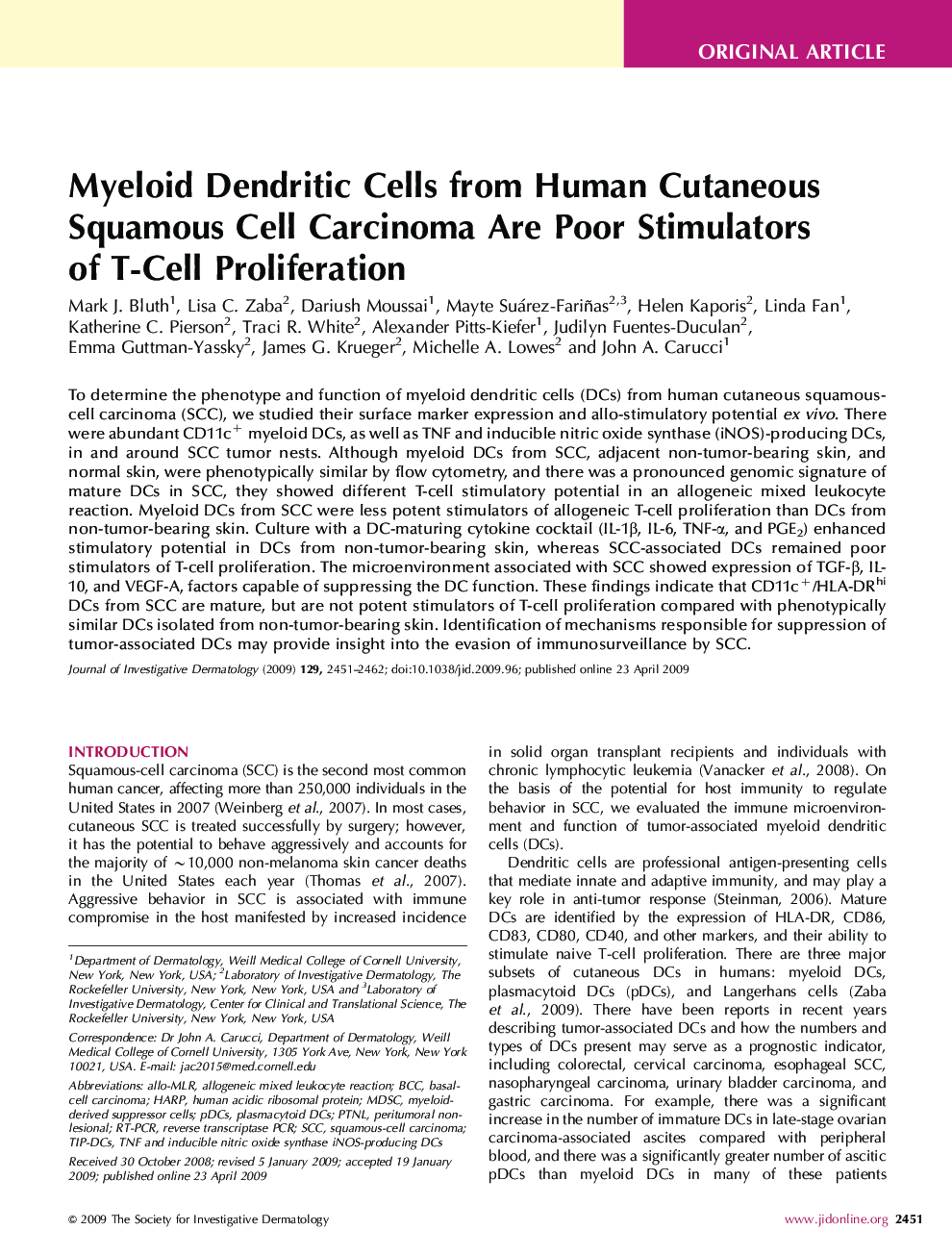| Article ID | Journal | Published Year | Pages | File Type |
|---|---|---|---|---|
| 3216308 | Journal of Investigative Dermatology | 2009 | 12 Pages |
To determine the phenotype and function of myeloid dendritic cells (DCs) from human cutaneous squamous-cell carcinoma (SCC), we studied their surface marker expression and allo-stimulatory potential ex vivo. There were abundant CD11c+ myeloid DCs, as well as TNF and inducible nitric oxide synthase (iNOS)-producing DCs, in and around SCC tumor nests. Although myeloid DCs from SCC, adjacent non-tumor-bearing skin, and normal skin, were phenotypically similar by flow cytometry, and there was a pronounced genomic signature of mature DCs in SCC, they showed different T-cell stimulatory potential in an allogeneic mixed leukocyte reaction. Myeloid DCs from SCC were less potent stimulators of allogeneic T-cell proliferation than DCs from non-tumor-bearing skin. Culture with a DC-maturing cytokine cocktail (IL-1β, IL-6, TNF-α, and PGE2) enhanced stimulatory potential in DCs from non-tumor-bearing skin, whereas SCC-associated DCs remained poor stimulators of T-cell proliferation. The microenvironment associated with SCC showed expression of TGF-β, IL-10, and VEGF-A, factors capable of suppressing the DC function. These findings indicate that CD11c+/HLA-DRhi DCs from SCC are mature, but are not potent stimulators of T-cell proliferation compared with phenotypically similar DCs isolated from non-tumor-bearing skin. Identification of mechanisms responsible for suppression of tumor-associated DCs may provide insight into the evasion of immunosurveillance by SCC.
